Spark plugs are essential in an engine’s smooth running, so you should keep them in clean working order. Cleaning your spark plug is an easy and quick way to keep them working optimally, but it’s also essential to find out why you often have to clean your spark plugs.
Some car owners always clean their spark plug when they notice any little oil or debris in the spark plug tube which is not the right thing to do when you find oil or debris in the spark hole. This article will show you the exact thing to do, which is cleaning the spark plug tubes and the spark plug itself. Hence, I will show you how to clean spark plug hole to get off the gunk or oil in the spark plug hole.
If you see oil in the plug wells when you take off the spark plugs, you may want to take it off because if it stays there for long, it will cause an engine misfire which you don’t want it to happen. Follow this guide to remove loose materials or oil from your plug wells.
Things Needed
You can find the car battery either in your trunk or engine bay. It looks like a rectangular plastic box with two terminals on top. Take off the negative terminal by loosening the bolt holding the cable on the terminal, and then pull it off. If you can’t find the battery, visit your owner’s manual.
Find the ignition coils or high tension lead cables. (Thick wires that come from the distributor) trace the wires to track down the spark plug tubes. There will be one coil/cable and one spark plug for each cylinder. If you’re finding it difficult to track down the spark plug tubes in your car, visit your owner’s booklet or service manual.
There will be one coil/cable and one spark plug for each cylinder. If you’re finding it difficult to track down the spark plug tubes in your car, visit your owner’s booklet or service manual.
Once you find the spark plug holes, the next thing you want to do is to clean all the gunk and dirt to prevent it from falling into the tubes. If it does, you’re going to get it out anyway since this article is all about how to get out the gunk in the spark plug hole. Use your air gun to blow out loose materials around the hole. Ensure you put on your safety glasses.
To prevent adding more debris and gunk into the spark plug holes rather than removing them, you have to remove the ignition coils one at a time. Grip the ignition coil firmly and gently pull it off by turning and pulling it.
Fix the spark plug socket on an extension, and then fix your ratchet on the extension. Put the socket on the spark plug tube and break free the spark plug by turning it counter-clockwise. Once you break it free, you can take off the ratchet and unscrew it by hand.
Put the socket on the spark plug tube and break free the spark plug by turning it counter-clockwise. Once you break it free, you can take off the ratchet and unscrew it by hand.
Cleaning your spark plug hole with an air gun is the surest way to remove dirt, debris, or any loose material that finds its way into the spark plug tubes. This step requires fixing your air gun tip into the spark plug hole to send compressed air to blow out any debris and gunk inside. Several air guns come with different tip sizes. You have to use a long tip that will get close to the bottom of the well. An extended tip will do a perfect blow job than a short one.
You can choose either the previous step or this one. If you see oil on the spark plug or ignition coil with the spark plug out of the hole, it indicates you have oil in spark plug tubes. To clean oil from the spark plug holes, you have to spray carb cleaner in the spark plug hole and then take a giant screwdriver and a clean rag and dip it into the spark plug Wells to clean off the oil in it.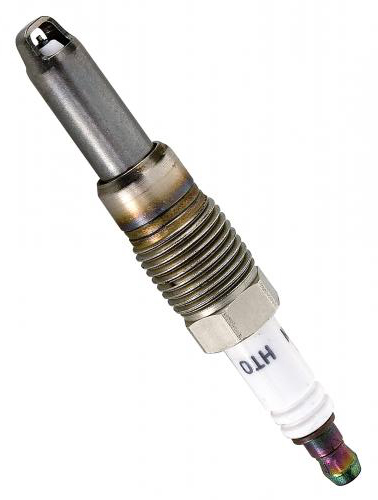 To avoid spraying too much carb cleaner in the spark plug tubes – spray the carb cleaner on a clean rag rather than spraying the cleaner inside the plug wells. Do the cleaning multiple times to ensure you have thoroughly wiped out all the oil.
To avoid spraying too much carb cleaner in the spark plug tubes – spray the carb cleaner on a clean rag rather than spraying the cleaner inside the plug wells. Do the cleaning multiple times to ensure you have thoroughly wiped out all the oil.
Note: oil in spark plug wells is abnormal, which indicates a faulty valve cover gasket. The only way to prevent oil from getting in again is by replacing the bad valve cover gasket.
After cleaning the spark plug holes, you have to clean the spark plugs with a spark plug cleaning tool, wire brush, or sandpaper. Whichever option you want to take, ensure you clean the spark plugs very well.
Visit your owner’s booklet to see the recommended measurement for your spark plug gap. Then, insert the gap tool in-between the spark plug and the plug electrode. Measure the gap, either press down the electrode or pry it till the gap matches the vehicle’s specifications. Suppose you can’t find the gap spec. for your car, visit the manufacturer’s website.
Suppose you can’t find the gap spec. for your car, visit the manufacturer’s website.
The spark plug wrench has a rubber grommet inside that will hold the plug, so you can easily fix back the spark plugs without closing the gap. Suppose your plug wrench does not have the rubber grommet inside. You will have to gently put the spark plug back by hand.
Snug the spark plug by hand using a socket and extension. Once you have snugged the spark plug by hand, connect your ratchet handle to tighten the spark plug properly. Ensure the spark plug is secure. However, you don’t have to over-tighten it. Overtightening can cause the spark plug to break, so only apply moderate pressure while tightening the spark plugs.
Grab the ignition coil or plug wire and reinstall them using the reserve process. You have to fix everything in place – including the battery terminals. Then, start your engine and allow it to run on idle so you can check out for any error.
Then, start your engine and allow it to run on idle so you can check out for any error.
A teaspoonful of fuel in the plug well is enough to make it fire. It is generally advisable to put the gas in the intake manifold instead. Too much gas in the spark plug hole will help wash out oil on the catalyst too, but you’ll be causing severe damages to your entire engine system.
It is necessary to clean the spark plug surface before removing it. This helps to prevent dirt, grime, debris, and any loose materials around the spark plug surface from getting into the spark tubes. The best way to remove these loose materials is by using canned air or air gun.
Yes, you can spray carb cleaner into spark plug tubes to dissolve hardened debris and loose materials in the well and afterward take them out using an air gun. However, I recommend spraying the carb cleaner on a clean rag, then dip it inside the plug holes rather than directly pouring the cleaner into the spark plug holes.
However, I recommend spraying the carb cleaner on a clean rag, then dip it inside the plug holes rather than directly pouring the cleaner into the spark plug holes.
All automotive cleaners are specifically made to clean one component in your car. For instance, a brake cleaner is specifically made for cleaning brake systems, and a throttle body cleaner for the throttle. Although, some of these cleaners can work on other car components. Like WD40, you can spray it into spark plug tubes to dissolve moisture and then take them out using an air gun.
Cleaning a spark plug socket could be difficult, especially when the socket looks so scrappy. It requires spraying a carb cleaner or engine degreasers and allow it to stay for 10 minutes, then blow it out using an air gun.
It might surprise you to know that spark plug tubes require some cleaning after hundreds of thousand miles – and yes, some really need some cleaning either due to oil in spark wells or gunk on spark plug tube threads.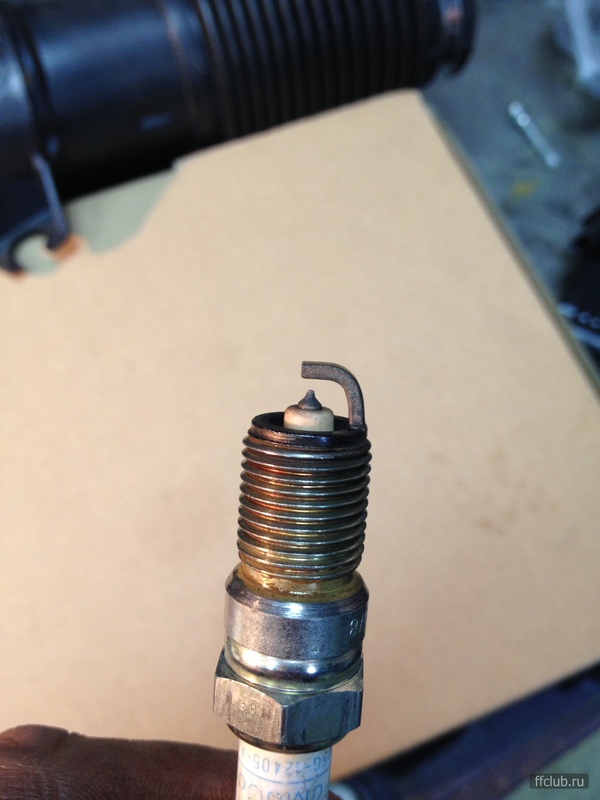 Cleaning the spark plug hole threads will prevent possible spark plug seizures and make the plugs a lot easier to remove when replacing them in the near future. Hence, follow this how-to clean spark plug hole guide to remove oil in the spark plug hole and prevent plug seizure.
Cleaning the spark plug hole threads will prevent possible spark plug seizures and make the plugs a lot easier to remove when replacing them in the near future. Hence, follow this how-to clean spark plug hole guide to remove oil in the spark plug hole and prevent plug seizure.
Read More:
Spark plugs are essential components in petrol engines that enable the vehicle to run nicely and smoothly. So it is crucial to keep the plugs clean to provide optimal performance. The way to avoid unnecessary replacements and keep them in good working condition is by cleaning them.
Cleaning spark plugs is one thing; knowing when they need cleaning is another. It is usually best to replace old and dirty spark plugs. What if you’re on a tight budget and can’t afford to replace them with new ones? Then, cleaning will suffice.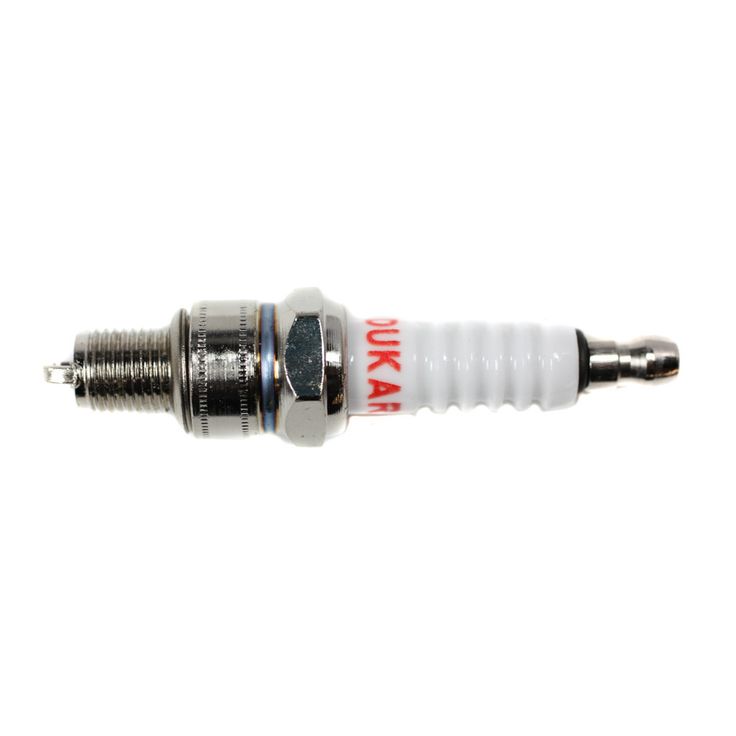 It can keep your vehicle running nice and smoothly again for a few thousand miles.
It can keep your vehicle running nice and smoothly again for a few thousand miles.
In this article, we’ll discuss at length how to clean spark plugs using a blow torch, abrasives, and spark plug cleaner tools. However, it is essential to know when a spark plug goes bad.
Cleaning spark plugs is a mechanical task that every entry-level mechanic and DIYer can do effectively. In any case, there are various methods to clean spark sparks.
When planning on cleaning spark plugs, you need to remove them; first, there’s nothing like how to clean spark plugs without removing them. You need to access the plugs by removing them before choosing the method you want to use.
Locate the spark plugs by tracing the ignition coil or spark plug wire. you find it challenging to locate the spark plugs in your vehicle, consult your owner manual – that’s the manufacturer’s blueprint.
Once you locate the spark plugs, clean the dirt and debris surrounding that area to prevent them from falling into the plug holes when removing the plugs.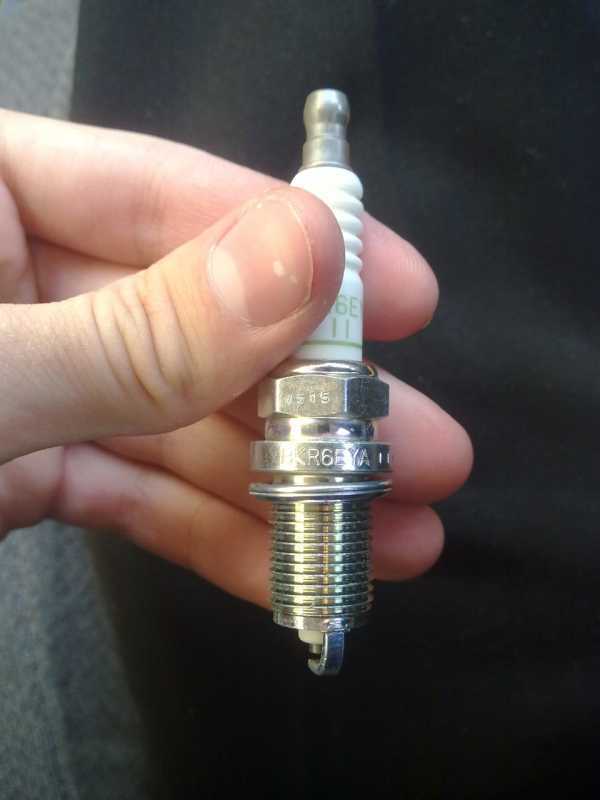 Ideally, I recommend blowing the dirt and debris away with compressed air.
Ideally, I recommend blowing the dirt and debris away with compressed air.
If dirt or debris falls into the spark plug holes while taking off the plugs, it could cause catastrophic damages. When blowing off the junk with canned or compressed air, ensure you wear eye protection.
Remove the plug wires one at a time. This will help you put spark plug wires correctly to avoid engine stalling/backfiring and reduce the risks of something falling into the plug holes when you unscrew the plugs.
Removing all the plug wires simultaneously will not confuse you when reinstalling them. When removing high tension wires, hold it on the low boot firmly and gently pull it out. If any of the cables prove stubborn to come out, hold it firmly and twist it a little to loosen up.
Get a spark plug socket and connect it to an extension and a ratchet handle. Put the plug socket in the spark plug hole and turn it counterclockwise to break free and unscrew the plug. The moment it’s free, remove the handle and unscrew it by hand.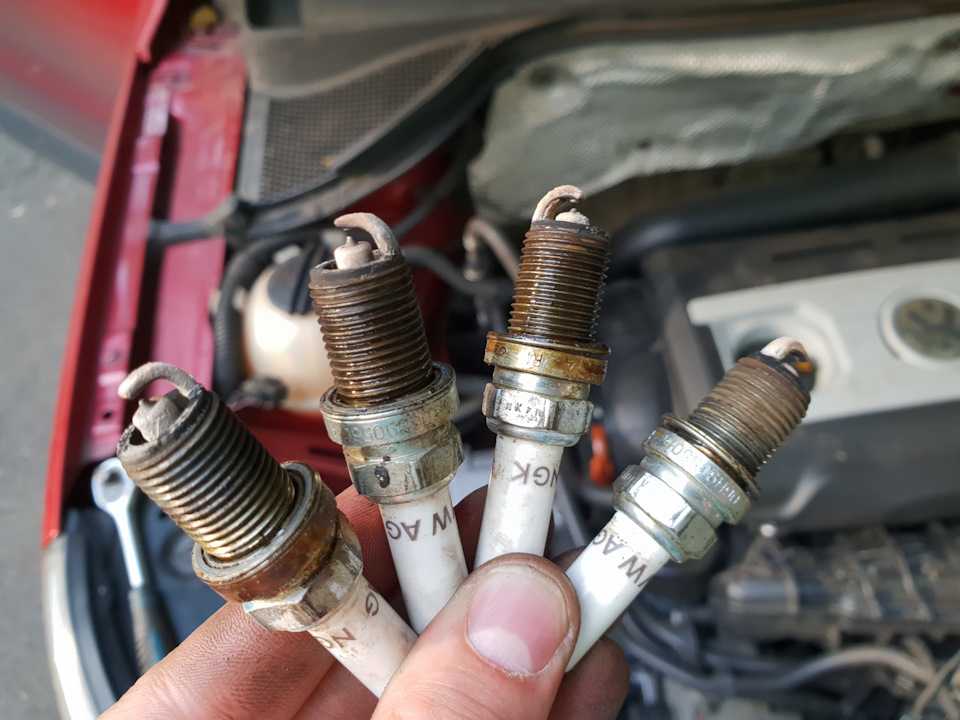
Most spark plug sockets have rubber grommets that will grip the spark plugs and prevent them from falling when removing them out of the hole. When removing the spark plugs, watch out for debris and blow it off to avoid falling inside the cylinder head.
Clean the electrodes with 220-grit sandpaper: There’s always a small pole sticking out of the end of a spark plug (the part that goes into the engine). It is known as an electrode. If it has carbon deposits or it’s discolored, get a piece of sandpaper and clean it gently until there’s no piece of carbon left on it.
Keep sandpapering the electrode until it looks like bare metal. It is advisable to put on eye protection while sanding. Sandpaper is one of the best spark plug cleaners in the market.
Clean the carbon deposits with a file: Sandpaper should be able to do the trick, but if it doesn’t, consider filling off the stubborn deposits with a file.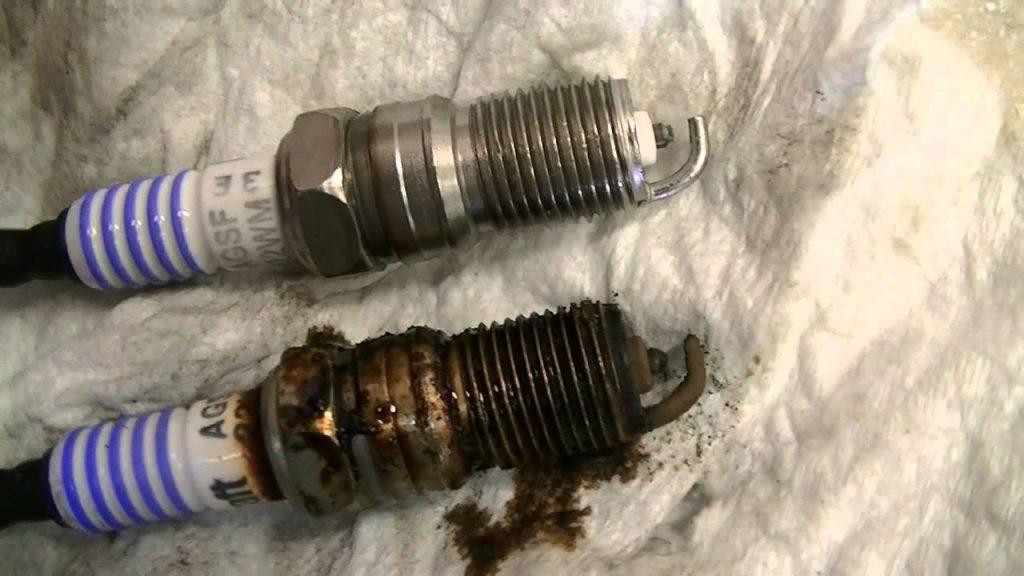 Place the file on the gap between the plug body and the electrode and slide it back and forth.
Place the file on the gap between the plug body and the electrode and slide it back and forth.
Clean the threads with a wire brush: There are chances that you have grimes and oils on the plug threads. If there’s oil on them, it’s an indication of oil in spark plug holes. Clean the spark plug holes before reinstalling the plugs. Brush the plugs from a perpendicular angle to easily remove the deposits and debris on the thread. Then, turn and brush the plugs from a different angle.
Ensure you wear hand gloves when cleaning plugs with a wire brush to avoid poking yourself. The thread doesn’t have to retain its color to work, but you need to remove all the deposits.
Use carb cleaner: Carb cleaners are available in nearby auto shops and online stores like Walmart, eBay, and Amazon.
If you’re an entry-level mechanic, you may be wondering how to clean spark plugs with a car cleaner. Carb cleaners are used to clean carbon deposits, buildup, dirt, and junk on several auto parts effectively.
To clean with carb cleaner, place the spark plug on a clean surface like a vice and spray the cleaner on it. After spraying the cleaner, wipe it with a clean towel. Aside from cleaning, it dries quickly and leaves you with clean spark plugs.
If the carbon deposits prove stubborn to clean, use a wire brush and a carb cleaner. Once you’re done, wipe the plug thoroughly with a clean towel or rag to dry off the carb cleaner on it.
Repeat the process on all the spark plugs simultaneously. The first is to clean, then reinstall and socket the lead wire or ignition into that cylinder. If you’re asking how to clean spark plugs with vinegar or wondering how to clean spark plugs with petrol, the process is similar to carb cleaner.
It requires brushing off the carbon deposits on the plugs with a wire brush and soaking the plugs with vinegar or petrol for a few seconds.
A blow torch will make the spark plugs extremely hot. Hence, you’ll need to extend the length of the plugs by holding them with a plier to prevent burning your hand.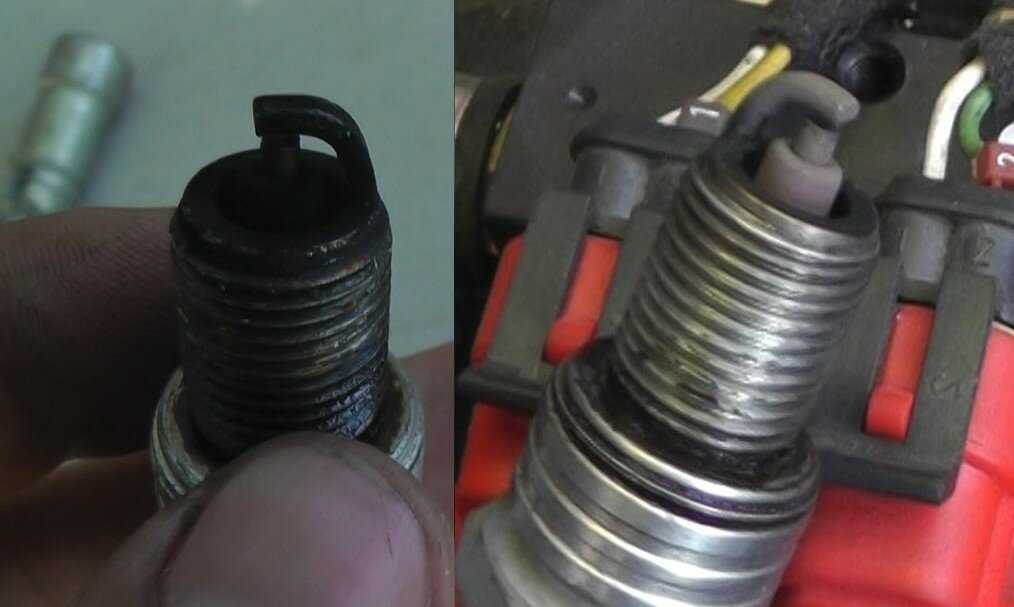
Hold the plugs with pliers on the end the ignition coil connects to. Hold the plug firmly and don’t squeeze it to avoid causing damage to the plug. The plier should only act as an extension. A bench vice is a better alternative to pliers.
Turn on the knob on your propane touch or gas, then place the ignition source in front of the nozzle or hit the ignition button. This will ignite and keep it burning. Turn the torch up until it starts generating blue flames.
The touch will burn off all the junk, debris, and oil on the spark plugs. Don’t be afraid of damaging the plugs; they’ll survive the heat without issues. Keep burning the plug while rotating it until the electrode and the end of the spark plug is glowing red.
Do not allow anything to distract you, and don’t let the torch burn anything else (burn only the threaded portion of the plugs). The burning process may take several minutes, depending on your torch and how hot it gets.
Allow the spark plugs to cool before holding them with your fingers.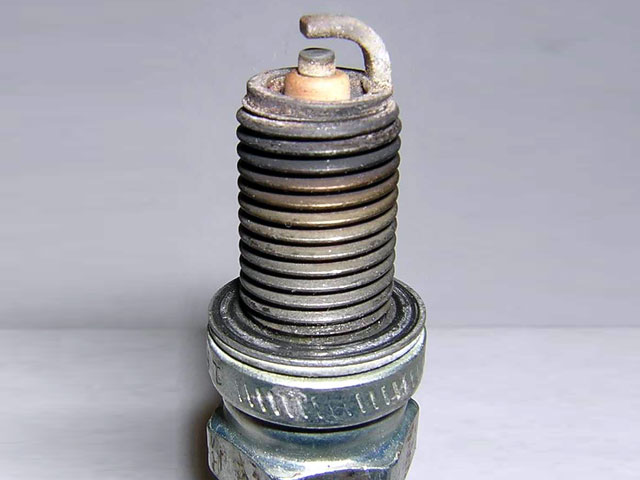 The plugs need to be cool before using them. You must be careful when dealing with spark plugs and a blow torch; the spark plugs will return to their standard color long before it becomes cool. To avoid burning off your hand, allow each plug to stay for 5 minutes before trying to reinstall it.
The plugs need to be cool before using them. You must be careful when dealing with spark plugs and a blow torch; the spark plugs will return to their standard color long before it becomes cool. To avoid burning off your hand, allow each plug to stay for 5 minutes before trying to reinstall it.
Remember, I asked you to clean the spark plugs simultaneously. When a spark plug is cool, reinstall it and plug in the ignition coils or high tension wire before moving to another one. Continue this process until you clean all of them. Do not clean one and leave others.
Another proven effective method of cleaning spark plugs is using a spark plug cleaning machine. The cleaner tool is designed to feed in air and sandblasts the spark plugs. This tool is pretty handy.
To use this tool, fix the airbag and tighten the clip, then plug in the air supply. Push down the button on the machine, socket the spark plug, and switch the mechanism to sandblasting.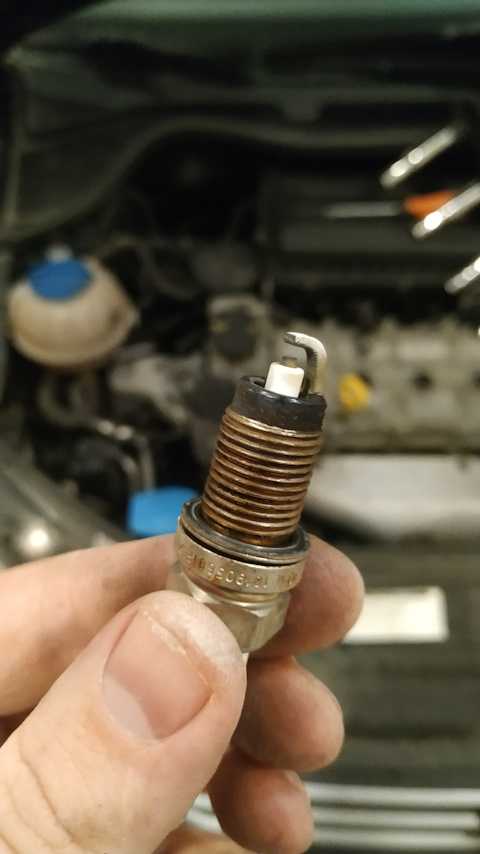 Keep shaking the plug so the cleaning tool will blast off all carbon buildup on it. When you are done with the blasting, switch the machine to air and blow off the debris on the plug.
Keep shaking the plug so the cleaning tool will blast off all carbon buildup on it. When you are done with the blasting, switch the machine to air and blow off the debris on the plug.
I still recommend you blow the spark plugs with an air supply. You wouldn’t want debris to fall inside your cylinders. For a visual clarification on using this tool, watch this video.
Consult your vehicle owner’s booklet or visit the manufacturer’s website to know the specified gap measurement. Once you have ascertained the measurement, insert a spark plug gap tool on the gap between the electrode that sticks out and the spark plug body.
Measure the opening and know whether you should increase or decrease the gap by either prying the body further from the electrode or tapping it closer to the electrode until you get the exact specification.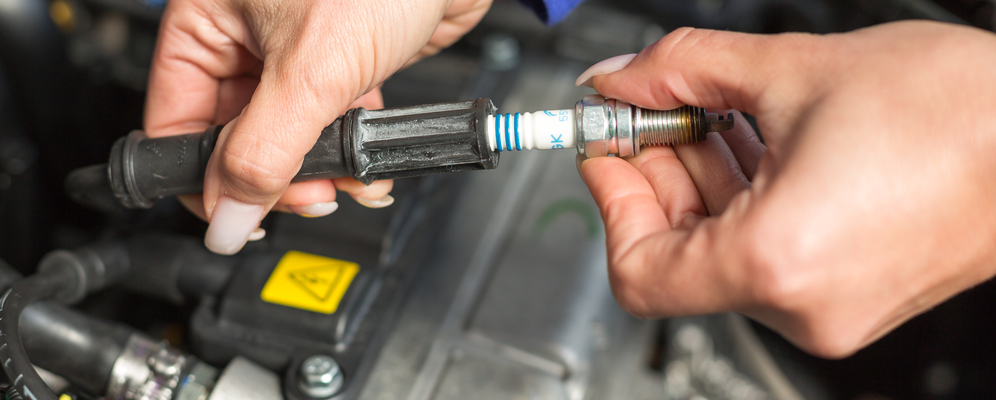
Insert the spark plug and tighten it by hand. This is essential to avoid cross-threading the plugs. Threading the spark plug with a socket handle can wear out the threads. Hence, it is advisable to snug it by hand before torquing it with a plug socket.
Once you can’t move the plug by hand anymore, connect your socket wrench and torque it. However, you don’t have to apply too much force to it. Using too much can cause the plug to break in the cylinder head. If this happens, you’ll need to drop the head cylinder, leading to.
What’s next? Reconnect the ignition coil or spark plug wire. Hold the wire firmly on the boot and gently connect it to the plugs. You’ll hear a click that signifies the wire sits nicely on the plug.
If you don’t hear a click, that indicates the plug wire did not connect well on the plug and may pull off while cruising down the road. So, if the wire does not sit properly, pull it up and reinsert it while twisting it left and right.
Yes, of course. A spark plug can be cleaned and reused; if not, what’s the need for this article? In any case, today’s high-end spark plugs cannot be filled but can be slightly blasted and clean. Using a wire brush, wd40, or spark plug cleaner tool will do an excellent cleaning.
A spark plug can be cleaned and reused; if not, what’s the need for this article? In any case, today’s high-end spark plugs cannot be filled but can be slightly blasted and clean. Using a wire brush, wd40, or spark plug cleaner tool will do an excellent cleaning.
However, cleaned or blasted spark plugs cannot give the same efficiency as new ones. Given that high-quality work plugs like ruthenium, platinum, and Iridium spark plugs only cost a few dollars, getting a new spark plug won’t tear your pocket.
Wd40 is produced to remove carbon deposits and fights moisture on several auto components like spark plugs and plug cables. The acronym WD stands for water displacement. So, if any part of your system components is wet and you want to wipe off moisture, wd40 is the guy to use.
I know you will be wondering how to clean spark plugs with wd40. It’s as easy as using a brake cleaner. Loosen the spark plugs and place them on vice and spray the wd40 on it.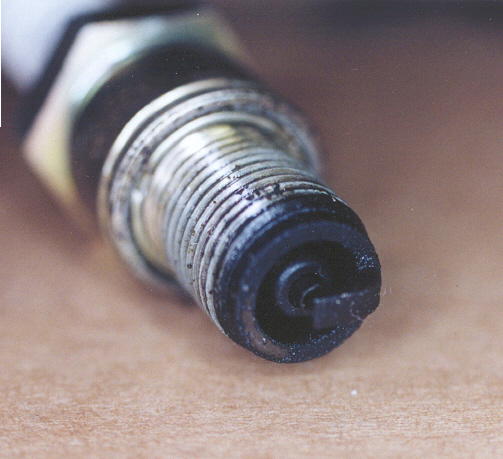 Once you’re done with one side, turn the other side and clean it.
Once you’re done with one side, turn the other side and clean it.
You have to clean spark plug areas before taking off the plugs. However, cleaning a spark plug requires removing them to access the carbon buildup.
It’s not all about applying grease on a spark plug, but how and where you use it counts. Since dielectric grease is an insulator, you need to apply it on the spark plugs alone sparingly. Do not let it touch the metal connector on the boot. Take the grease with cotton wool and apply only a tiny amount.
Apply a thin layer of the electric grease inside the boot via a circular motion. For optimum protection, you can apply a thin layer of grease to the ceramic coating of the spark plugs. Again, use it in the same circular motion. Make sure not to touch grease on the spark plug metal terminal. For a visual presentation, watch this video.
Spark plugs use a specific type of grease. It requires only dielectric grease, which is a protectant like car wax. Dielectric grease is also used on several car components like battery terminals, lightbulbs, and spark plug boots.
When cleaning or replacing old spark plugs, if you see oil on the spark plugs wires, ensure you clean the spark plug holes to get efficient performance.
You’ll also need to inspect the spark plug cables; a bad spark plug could be the reason you’re cleaning or replacing an old spark plug. If it is the culprit and you fail to figure it out, you’ll end up getting the same result even after a replacement until you change the defective cable.
At this juncture, this article has provided sufficient information on how to clean spark plugs. The process is simple, fast, and accessible.
Home » Tips » Articles
Articles
Author Krasnov Alexander For reading 3 min. Views 115 Posted by
It is not uncommon for a black ATV spark plug to be found during technical inspection. The part acquires this color due to dark soot. If a similar thing was found on a four-wheeler, this indicates some malfunctions. You need to find the cause of the problem and fix it. Otherwise, it will lead to more serious damage. You can order an ATV inexpensively in our MotoGo online store. A large selection of high-quality motorcycles is presented in our motorcycle salon. We sell Chinese ATVs with 1 year warranty.
If the spark plug on an ATV is black, there can be several reasons for this. You need to carefully examine the detail. This may give you a clue as to what is causing it:

If black carbon deposits appear on the ATV spark plug, in most cases you can solve the problem yourself. You need to start by inspecting the air filter and, if necessary, replacing it. After identifying the cause of soot, you need to fix the problem.
You can try to revive the spark plug by cleaning it. This work must be done periodically, without waiting until it is covered with a thick layer of soot. When changing the oil, inspect the spark plug and clean if necessary. When cleaning a candle, do not use sandpaper, because it is so easy to damage the protective layer. If the ATV has a black spark plug, clean in the following sequence:
When changing the oil, inspect the spark plug and clean if necessary. When cleaning a candle, do not use sandpaper, because it is so easy to damage the protective layer. If the ATV has a black spark plug, clean in the following sequence:
Cleaning must be carried out thoroughly.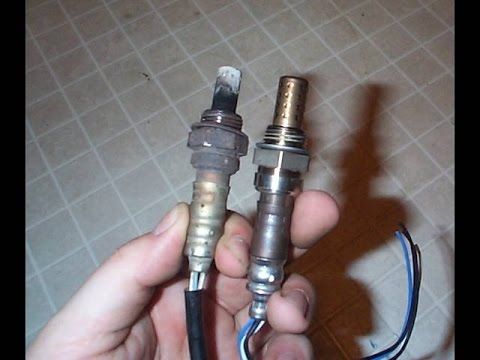 After processing, no traces of dirt should remain on the surfaces, otherwise the ignition will be unstable. Cleaning should be carried out periodically to increase the efficiency of the candle. If traces of dirt and soot remain on the surface, this reduces the quality of their functioning by 10-15%.
After processing, no traces of dirt should remain on the surfaces, otherwise the ignition will be unstable. Cleaning should be carried out periodically to increase the efficiency of the candle. If traces of dirt and soot remain on the surface, this reduces the quality of their functioning by 10-15%.
It is advisable to buy a spare new spark plug. In case of problems with the old part, you can quickly install a new one.
Our MotoGo online store https://motogo.com.ua/ sells motorcycles with delivery in Ukraine. We can order a suitable ATV, perform service and repair. We sell motorcycles, mopeds, ATVs new and used with a 1 year warranty. In our showroom you can see the models presented for sale, sign up for a test drive.
Contents of the article
Hello, dear friends! Today we’ll talk with you about how to clean spark plugs from soot directly at home, sometimes even using improvised means.
I want to note right away that it is unlikely that it will be possible to achieve effective cleaning without removing the candle. Here we will already talk about various additives and chemistry in fuel, the effectiveness of which is the subject of constant disputes and discussions.
Additionally, you can watch the video for clarity. Also, be sure to write in the comments what methods you used, and what you managed to achieve using certain methods and means.
There is a fairly simple and most obvious way for many people to clean car spark plugs from carbon deposits. But only processing iridium candles in this way is contraindicated.
Iridium spark plugs most often use ordinary metal as the center electrode. Only partially and with a thin layer it is covered with expensive metals.
By sanding them, you will simply erase the extra layer of insulation. Such a candle can still work for some time, but then it will finally fail.
Processing of iridium products by physical impact on them is in no case impossible. In terms of removing carbon deposits, sandpaper acts very quickly, but just as quickly leads the candle to a state of complete disrepair. And why destroy with your own hands something that, in theory, can last more than one thousand kilometers. But nickel candles can be processed with sandpaper or a needle file. But only extremely carefully and with the most fine-grained materials. Sandpaper choose zero and no other. Do not vigorously rub the center and side electrodes. Just swipe a few times.
I will say this. Sharpening and processing any candles with sandpaper and other abrasives is a dubious undertaking. Any inaccuracy leads to serious negative consequences. The option may be fast, but ineffective.
If you want to clean your spark plugs yourself, but still prefer safer methods that are equally effective, try simple household chemicals.
To the question of whether VD40 can be used to clean candles, I will say this. It will help as an aid for pre-soaking. But in the role of an independent cleaner from soot, it copes poorly. It is better to use other methods.
It will help as an aid for pre-soaking. But in the role of an independent cleaner from soot, it copes poorly. It is better to use other methods.
As for household chemicals, then products designed to remove rust or limescale show themselves well. In fact, this is any preparation focused on cleaning and cleaning plumbing. You just need to soak the candles for a while in this tool, and then gently brush with a toothbrush. The result depends on many components, including the components used in household chemicals. Upon completion of work, be sure to rinse the candles with clean water and dry completely.
It is difficult to say exactly what the result will be. Therefore, I propose to leave feedback to those who have tried various household products and can speak from personal experience about their effectiveness.
Separately, I want to consider a few products that have shown themselves well. They really make it possible to quickly and effectively rid the spark plugs of carbon deposits.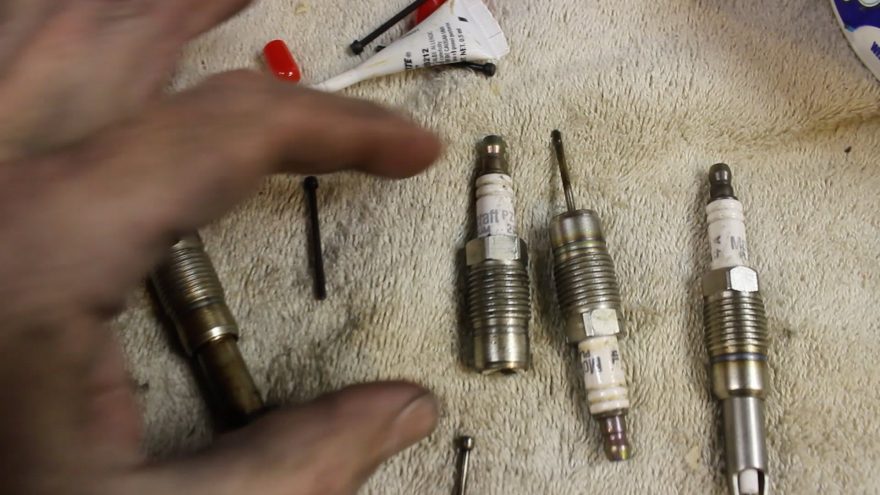
Only work with them must be extremely careful, observing safety precautions.
Now let's go through them separately.
In practice, cleaning with a chemical method gives almost the best result among those possible at home. Yes, it is best to contact a specialized service, where they will clean the candles at a special stand or even at an ultrasonic unit. The last option is the most effective, but also the most expensive. Therefore, it is resorted to only by those who are ready to spend that kind of money on restoring already several worn-out spark plugs in an automotive ignition system.
It is worth recalling that malfunctions and clogging of candles can lead to a number of consequences. These are situations when the car starts and immediately stalls, or the so-called engine detonation occurs. Even if your car simply does not start corny, candles are one of the first to be checked.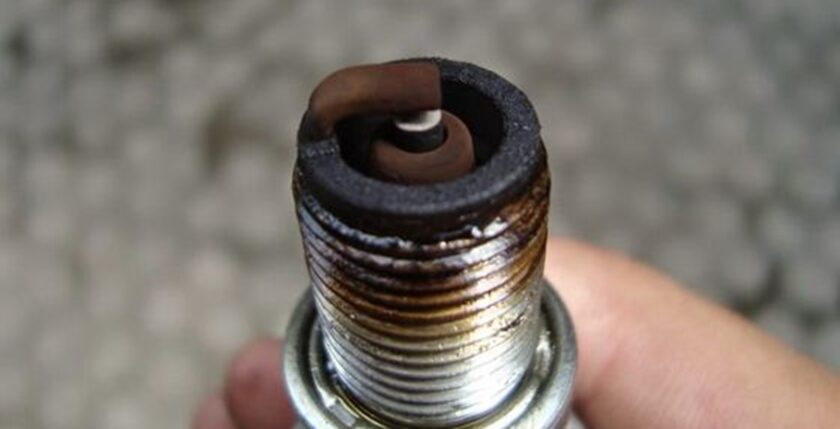
Dimexide is able to cope with light and difficult types of spark plug fouling. Even if the soot is serious, there is a high probability that the situation will be corrected with dimexide.
Dimexide is a pharmacy product intended for the treatment of facial skin mainly. But in fact, the composition can corrode many components, including soot and scale. Using the tool is extremely simple. You need to take a small plastic cup, pour 50 ml of funds into it, lower the candles inside, leave for several hours. After that, the candles are taken out and cleaned with a simple toothbrush. Just rinse with clean water and dry.
Effective, efficient and quite simple. I recommend to try.
Here it is necessary to use acid (70%) and not table vinegar, since the effectiveness of the latter is extremely low.
The essence is approximately the same as in the previous version. You need to fill the candles with a small amount of acetic acid and leave for at least 30 minutes.